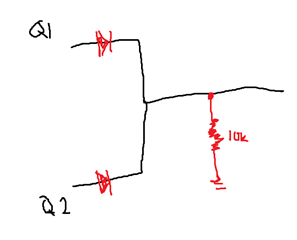For the schematic safety analysis I want to discuss situation when 5V supplied SN74LV1T00DBVR output connected to the ground over 22 Ohm resistor.
In this situation output current exceed 25 mA Absolute Maximum output current . Should I expect any safety related critical problems like smoke or ignition?
The same question for the situation when two 5V supplied SN74LV1T00DBVR buffers outputs are shorted ( one has the logical H and second the logical L)
Do you have any official document about?


